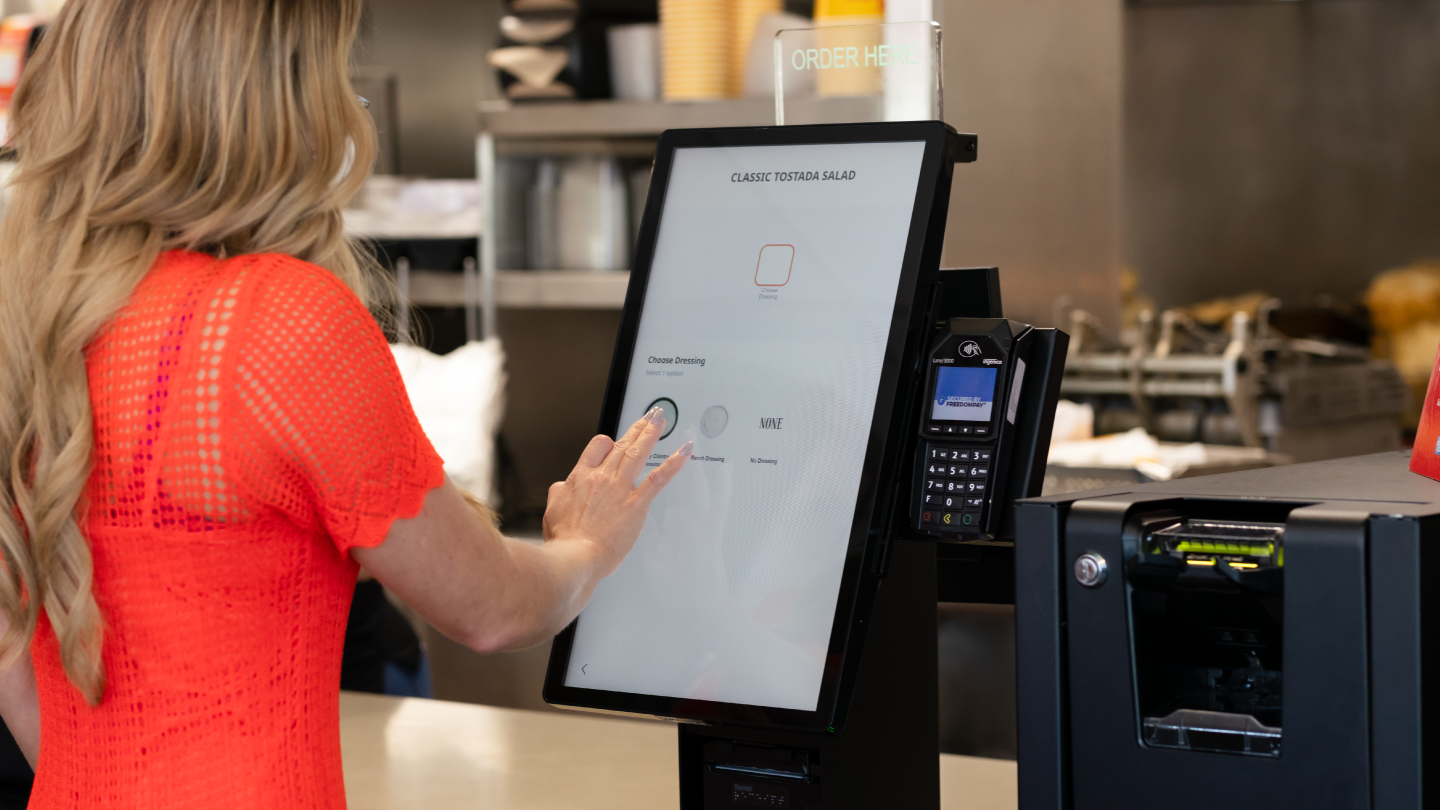How Self-Order and Pay Kiosks Boost Customer Satisfaction and Sales in QSRs
Paul Race

A data-driven analysis of the benefits of kiosk technology for quick serve restaurants
In the post-pandemic era, the challenges facing quick serve restaurants (QSRs) have evolved rapidly, with labour shortages, rising costs, changing consumer preferences, and fierce competition taking centre stage.
For QSRs to not just survive, but thrive, in this shifting market, they need innovative solutions. Solutions that can improve their operational efficiency, customer loyalty, and profitability, giving business the breathing room they need to meet these challenges.
One of the simplest and most effective ways to achieve these goals today is with self-order and pay kiosks – interactive touchscreens where customers can place and pay for their orders without the need for human assistance.
These powerful tools are designed to enhance the customer experience, reduce wait times, increase order accuracy, and offer personalised recommendations. In addition, they can help QSRs reduce labour costs, optimise kitchen workflows, collect valuable data, and upsell products.
Let’s look at some data from the last two years to see how this works.
Enhancing the Customer Experience
According to a survey conducted by The Harris Poll in 2022, 78% of QSR customers said they prefer to use kiosks over cashiers when ordering food, and 82% said they are more likely to visit a QSR that offers kiosks.
Why is that?
- Convenience: Kiosks allow customers to order and pay at their own pace, without feeling rushed or pressured by long queues or busy staff. Customers can use their preferred payment methods, such as credit cards, mobile wallets, or QR codes, and receive digital receipts via email or SMS. And when combined with cash automation solutions, kiosks can deliver the benefit of full payment choice to all consumers.
- Accuracy: Kiosks reduce the risk of human errors, such as miscommunication, misunderstanding, or misplacement of orders. Customers can review and confirm their orders before paying, and make any changes or additions as they wish. They can also customise their orders according to their preferences, such as adding or removing ingredients, choosing portion sizes, or selecting sauces and toppings.
- Personalisation: Kiosks can provide customers with personalised recommendations based on their previous orders, loyalty status, or dietary preferences. They can also display relevant promotions, offers, or rewards that can entice customers to try new products or increase their order value. Furthermore, kiosks can integrate with loyalty programs and mobile apps, allowing customers to access their profiles, redeem points, or receive coupons.
The goal here is that by improving the convenience, accuracy, and personalisation of the ordering process, kiosks can increase customer satisfaction, retention, and advocacy. In fact, a study by Tillster in 2023 found that QSR customers who use kiosks are 23% more satisfied, 19% more loyal, and 17% more likely to recommend the QSR to others than those who do not use kiosks.
Driving Increased Revenue for QSRs
Another major benefit of self-order and pay kiosks is that they can boost the revenue and profitability of QSRs in several ways. According to a report by McKinsey in 2023, QSRs that use kiosks can achieve an average increase of 12% in sales, 15% in order value, and 18% in gross margin.
Why is that?
- Upselling: Kiosks can leverage data-driven algorithms and persuasive design to upsell products to customers, such as suggesting larger sizes, combos, or add-ons. They can also display high-margin items, such as beverages, desserts, or sides, more prominently and frequently than low-margin items. Kiosks do not have any biases, fatigue, or hesitation when upselling, and can do so consistently and effectively.
- Efficiency: Kiosks can increase the efficiency and productivity of QSR operations, by reducing the need for labour, streamlining the order flow, and minimising the waste and inventory costs. Kiosks can also free up staff from taking orders and handling payments, allowing them to focus on preparing and delivering food, and enhancing the quality and speed of service. Moreover, kiosks can reduce the peak-time congestion and improve the throughput of customers, resulting in higher sales volume and lower abandonment rate.
- Data: Kiosks can collect and analyse a wealth of data from customers, such as their order history, preferences, feedback, and behaviour. This data can help QSRs gain valuable insights into their customers' needs, wants, and expectations, and enable them to tailor their products, prices, promotions, and services accordingly. Furthermore, this data can help QSRs optimise their menu design, layout, and content, and test and measure the impact of different variables on customer behaviour and sales performance.
By increasing the upselling, efficiency, and data capabilities of QSRs, kiosks can enhance their revenue and profitability, and give them a competitive edge in the market. A study by Acrelec, A GLORY company, in 2023 found that QSRs that use Acrelec's kiosk solutions can achieve an average return on investment (ROI) of 150% within 12 months, and a payback period of less than 8 months.
Self-order and pay kiosks are not just a trend, but a necessity for QSRs in the modern era. However, not all kiosks are created equal, and QSRs need to choose the right kiosk partner that can provide them with the best hardware, software, service, and support.
Acrelec has recently been identified by 3rd party analyst RBR Datos Insights as one of the leading self-order and pay kiosk providers in the world, with over 20 years of experience and expertise in the QSR industry. Acrelec offers a comprehensive range of kiosk solutions, from hardware and software to installation and maintenance, that can help QSRs achieve their business objectives and exceed their customer expectations.
To learn more about how Glory and Acrelec can help you transform your QSR with kiosk technology, let’s start a conversation.